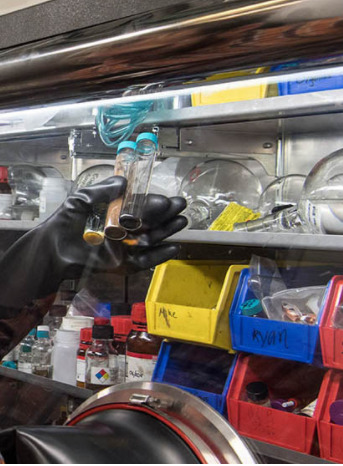(Pathways To Achieve New Circular Vision for Lithium-Ion Batteries)
2021/2/25 アメリカ合衆国・国立再生可能エネルギー研究所(NREL)

・ NRELが、リチウムイオン電池の廃棄材料を活用した循環型経済の実現に影響を及ぼす既存の政策や規制を分析・評価するテクニカルレポートを発表。
・ エネルギー貯蔵や EV での使用でリチウムイオン電池の需要は高まり、技術革新や低コスト化によるさらなる増大が見込まれている。同電池の現在のライフサイクルは、再利用やリサイクルを含む製品寿命管理方策への考慮を欠いた電池の製造、利用、廃棄のリニアモデルに基づいている。
・ EV の廃棄リチウムイオン電池のみで、2040 年までに年間 4 百万トン(ボーイング 747 22,000 機分の重量)にも上ると推定される。本レポートでは、関連文献のレビューと専門家へのインタビューを通じ、EV および二次電池電力貯蔵で使用される大型のリチウムイオンの再利用とリサイクルの状況を分析・評価した。
・ リチウムイオン電池の再利用とリサイクルは、米国の市場機会の創出・拡大、供給網の安定化、環境負荷の低減や資源制約の緩和に資するものであるが、現在米国内のリサイクル施設は一箇所のみとなっている。
・ リチウムイオン電池材料の再利用とリサイクルによる循環型経済の構築により、製造コストの低減、追加的な収入源の創出や税制優遇が期待できる。循環型経済は、環境に配慮した操業を通じ、企業の信用と消費者の信頼を向上させることで市場競争力を強化する。廃棄物、エネルギー消費量や温暖化ガス排出量や原料の節約などの環境保全上の幅広い利点を提供する。
・ これらの要因は、米国の連邦・州政府、自治体による循環型経済への投資に加え、製品、サービスや材料の再利用・回収プロセス革新への民間投資を加速するもの。
・ しかし、現在の障壁は技術、インフラ、プロセスであり、リチウムイオン電池設計と構造の多様性により、貴重な材料の再利用・回収にはコストのかかる手作業を要し、コスト効果的で標準的なプロセス設計が困難となっている。また、リチウムイオン電池の廃棄材料の状況・容量に関する信頼できる公開情報の制限もある。
・ 本レポートでは、知識の向上と民間投資の強化のため、政府資金による研究、開発、分析、インセンティブや情報交換を推奨。また、連邦・州政府、自治体を通じた明確で一貫したリチウムイオン電池の廃棄材料の再利用・リサイクルの規制や法体系の確立の重要性を提示する。
・ エネルギー材料の循環型経済への移行には、消費者から製造業者まであらゆる利害関係者に便益をもたらす幅広い協力体制、新政策、企業運営やシステムの変革が必要となる。
URL: https://www.nrel.gov/news/program/2021/pathways-to-achieve-new-circular-vision-for-lithium-ion-batteries.html
<NEDO海外技術情報より>
(関連情報)
NREL technical report
A Circular Economy for Lithium-Ion Batteries Used in Mobile and Stationary Energy Storage: Drivers,
Barriers, Enablers, and U.S. Policy Considerations
URL: https://www.nrel.gov/docs/fy21osti/77035.pdf
Abstract
Large-format lithium-ion batteries (LiB) are an essential component to a zero-carbon energy transition in the United States and around the world. National and international policy focused on
reducing carbon emissions and increasing electric grid resiliency continue to drive demand for mobile and stationary LiB battery energy storage (BES) (BNEF 2020; Wood MacKenzie and ESA 2020). In the U.S. alone, stationary BES (to support renewable energy generation) is expected to grow from 523 megawatts annually to 7.3 gigawatts in 2025, and U.S. roads are projected to see 46 million passenger electric vehicles (EV) by 2035 (BNEF 2020; Wesoff 2020;
Wood MacKenzie and ESA 2020).
The rapid growth and expected continual demand for mobile and stationary lithium-ion BES (LiBES) has led to global environmental and supply chain concerns. Critical materials (e.g., cobalt, lithium, nickel, graphite, manganese) used in LiBs are finite and mined in only a few regions around the world. Moreover, they are often found and refined in countries with less-stringent
environmental and human health regulations. The demand for graphite, lithium, and cobalt is
expected to increase by nearly 500% by 2050 and experts expect a shortage of nickel within in 5-
6 years if current trends for mobile and stationary Li-BES persist (World Bank 2020; Mayyas,
Steward, and Mann 2019; ReCell Center 2019c).
Moreover, as BES capacity increases in the United States so will the volume of spent LiBs (Bade 2019). Estimates based on a 10-year lifetime assumption found that the volume of LiBs that have
reached the end of their utility for EV applications alone could total two million units (four million metric tons) annually by 2040 in the United States (Richa et al. 2014; Ai and Borucki 2018). Retirements that are due to early failure (e.g., crashes and battery replacements), as well as BES deployment beyond earlier expectations, will increase these projections (Gibson 2019; Ai and Borucki 2018; Richa et al. 2014).
As first-generation EV batteries reach end-of-life in the U.S. and the global demand for critical LiB materials increases U.S. industry stakeholders, regulators, and policymakers are starting to (1) consider solutions to drive and enable environmentally sustainable LiB management decisions and behaviors and (2) identify barriers to a circular economy for LiBs. Circular economy principles attempt to transition from a “take-make-consume-dispose” linear economic system to a circular system that allows for the long life, high performance, and the reuse/recovery of products and materials (Ellen MacArthur Foundation 2016).
In this report we analyze drivers, barriers, and enablers to a circular economy for LiBs used in
mobile and stationary BES systems in the United States. We also analyze federal, state, and local
legal requirements that apply to the reuse, recycling and disposal of LiBs as well as the legal liability associated with noncompliance. Finally, we provide an overview of policies and initiatives in the United States that expressly address reuse/recovery and disposal of large-format LiBs. Some of our findings are listed below:



